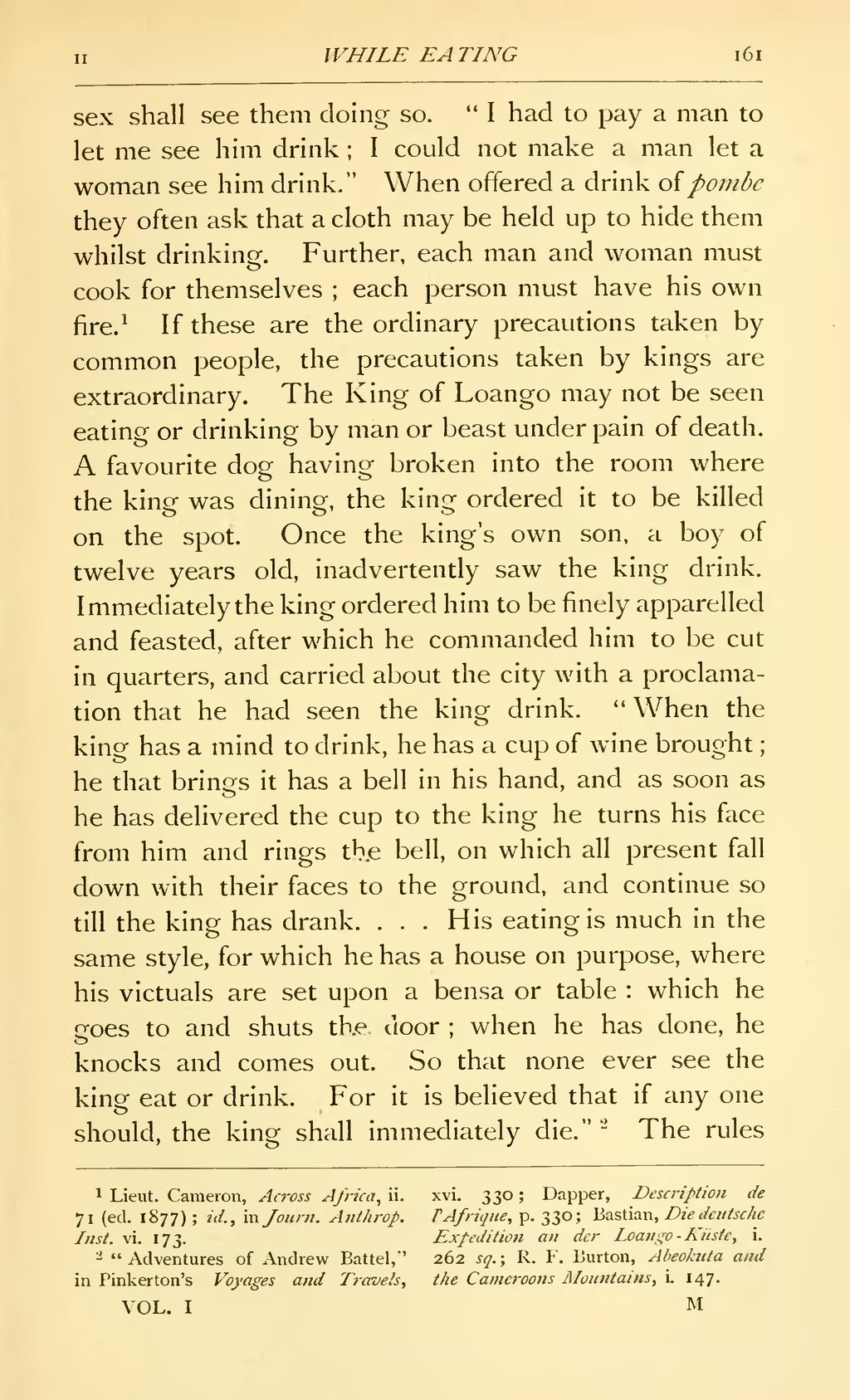sex shall see them doing so. “I had to pay a man to let me see him drink; I could not make a man let a woman see him drink.” When offered a drink of pombe they often ask that a cloth may be held up to hide them whilst drinking. Further, each man and woman must cook for themselves; each person must have his own fire.[1] If these are the ordinary precautions taken by common people, the precautions taken by kings are extraordinary. The King of Loango may not be seen eating or drinking by man or beast under pain of death. A favourite dog having broken into the room where the king was dining, the king ordered it to be killed on the spot. Once the king’s own son, a boy of twelve years old, inadvertently saw the king drink. Immediately the king ordered him to be finely apparelled and feasted, after which he commanded him to be cut in quarters, and carried about the city with a proclamation that he had seen the king drink. “When the king has a mind to drink, he has a cup of wine brought; he that brings it has a bell in his hand, and as soon as he has delivered the cup to the king he turns his face from him and rings the bell, on which all present fall down with their faces to the ground, and continue so till the king has drank. . . . His eating is much in the same style, for which he has a house on purpose, where his victuals are set upon a bensa or table: which he goes to and shuts the door; when he has done, he knocks and comes out. So that none ever see the king eat or drink. For it is believed that if any one should, the king shall immediately die.”[2] The rules
- ↑ Lieut. Cameron, Across Africa, ii. 71 (ed. 1877); id., in Journ. Anthrop. Inst. vi. 173.
- ↑ “Adventures of Andrew Battel,” in Pinkerton’s Voyages and Travels, xvi. 330; Dapper, Description de l’Afrique, p. 330; Bastian, Die deutsche Expedition an der Loango-Küste, i. 262 sq.; R. F. Burton, Abeokuta and the Cameroons Mountains, i. 147.
